Using ChatGPT for teachers is both - a boon and a bane. The results depend on how teachers use ChatGPT and, more importantly, how they let their students use it.
With artificial intelligence, teachers can fasten specific processes and increase their productivity.
In this article, we will tell you how exactly teachers should use ChatGPT, the concerns surrounding AI, and more.
How is AI being used in Education?
According to a Forbes Advisor survey, 60% of teachers are already using AI in their classrooms. Of these, the highest number of users are young teachers below 26 years old.
Slowly but steadily, educational institutions and teachers are accepting AI. Teachers use it to create study materials, gather information, and make AI a tool for productivity.
Kair Breitholtz, a school teacher from North Carolina, recently shared her view on using AI for teaching.

Aileen Wallace, a modern studies teacher and founder of AI with Aileen, is helping teachers befriend AI rather than criticize it. Recently, she shared how an AI tool is helping her add sections to her lesson plans to keep them up-to-date with the latest trends.
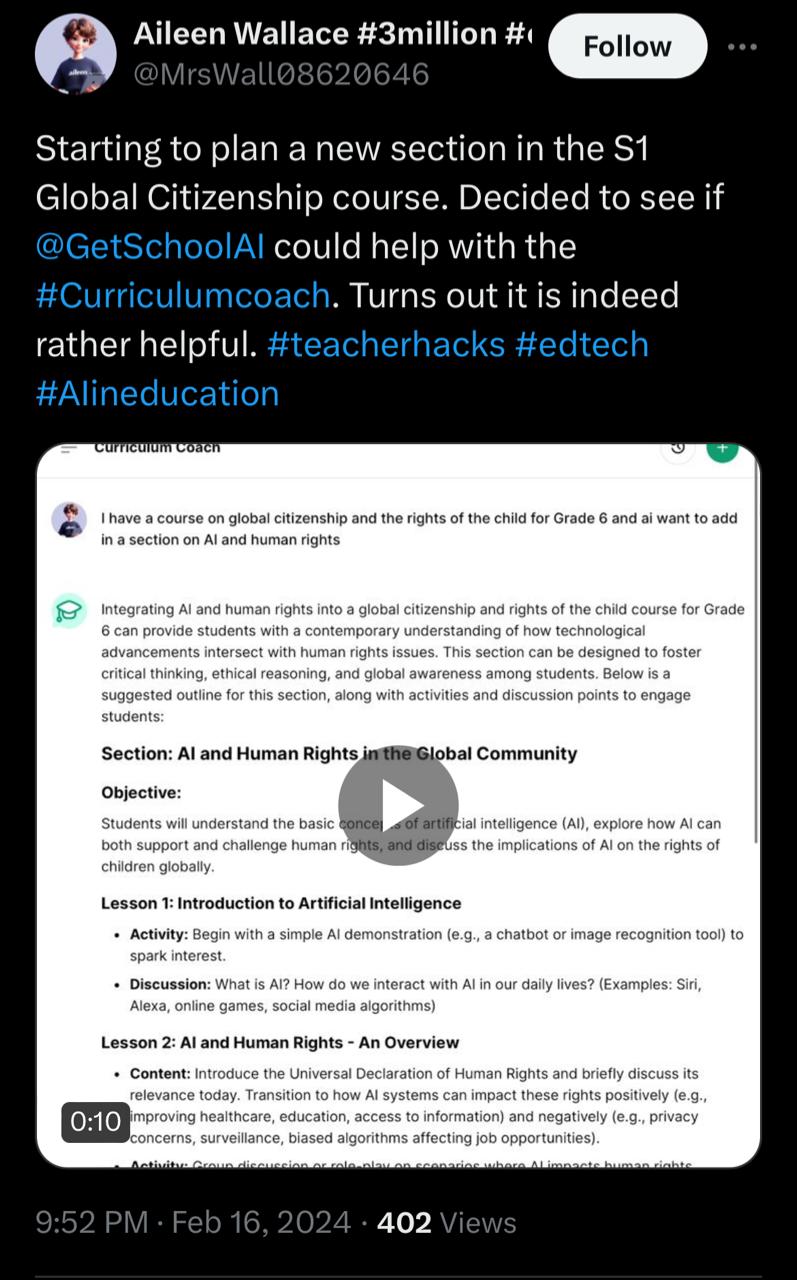
The next generation of teachers is going to use AI more vividly, but not as a main component. Read more to explore how teachers (and you) can use ChatGPT to enhance your teaching and stay put with the inevitable disruption of education.
How Teachers Are Using ChatGPT?
In this section, we have curated a list of the best ways teachers are using ChatGPT in their teaching strategy:
1. Using ChatGPT for Lesson Planning
Lesson planning can take hours. It’s tough to be the one-person army – researching, coming up with ideas, preparing a rough draft, and then a final copy. What if ChatGPT could meet you halfway?
Stephen Lockyer is using ChatGPT to draft lesson plans for his class.

To his surprise, what would have cost him hours of intensive research and writing, AI took one minute and some seconds to come up with a response. Here’s his prompt.
Prompt: Plan three lessons to explain how volcanoes are formed. Each lesson needs an introductory activity, information input, a student task, and a plenary.
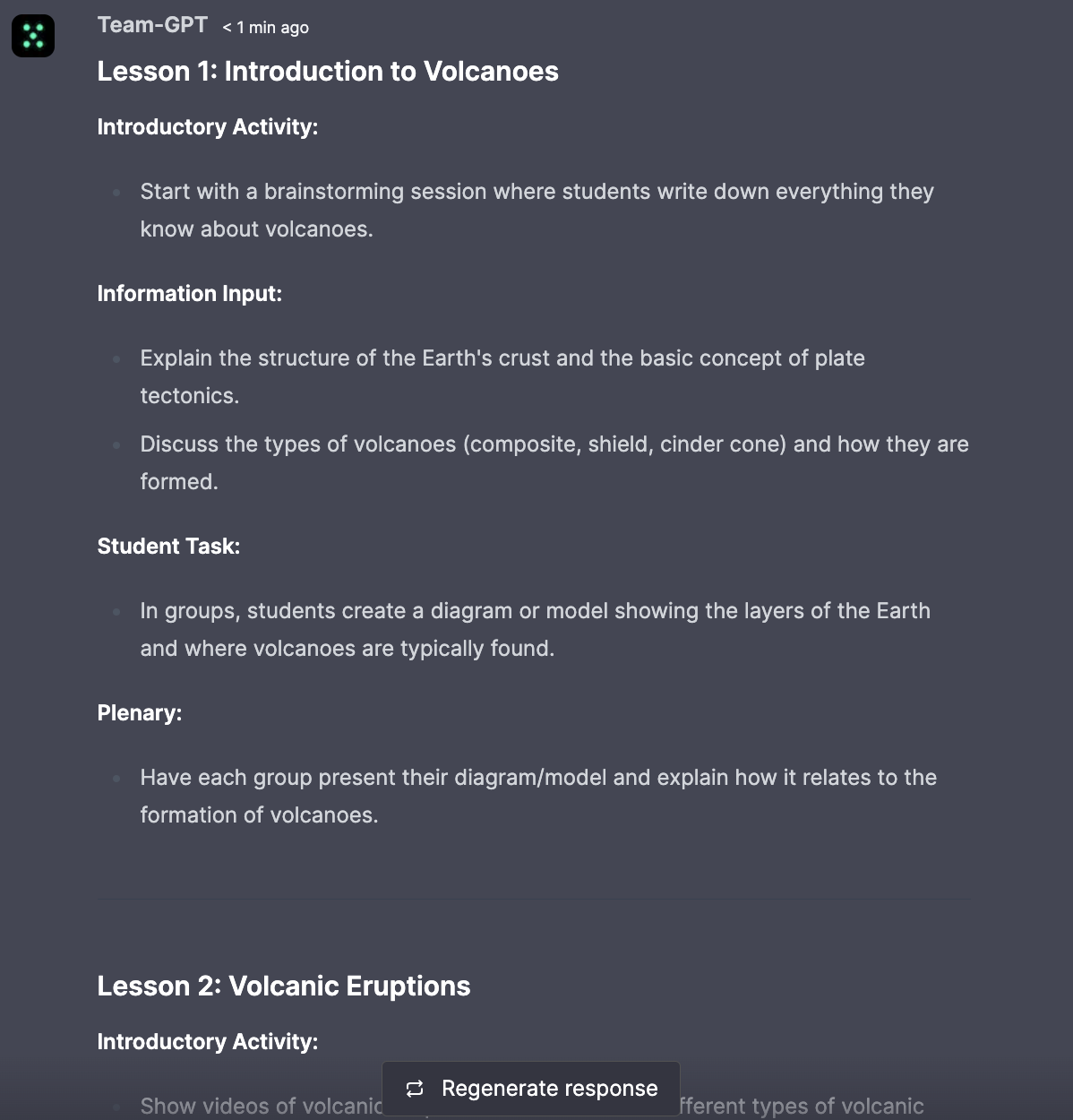
Chat link: https://chat.team-gpt.com/public/tanish/65d32e35d84cef1b9ad79275
2. Generating Explanations, Examples or Analogies
For teachers, it’s a challenge to come up with explanations and analogies on the fly. Firstly, good ideas are hard to think of. And secondly, you need something solid yet relatable and easy-to-understand for your students.
ChatGPT can help ideate explanations, examples, and analogies.
Instructors from Wharton School share how teachers can use ChatGPT to generate explanations or examples for concepts tailored to specific learning levels.
Here’s a comprehensive prompt Wharton used:
Prompt: You are an experienced teacher and can generate clear, accurate examples for students of concepts.
I want you to ask me two questions: What concepts do I want explained? Wait for me to answer and then ask me the second question: Who is the audience for the explanation?
Then, look up the concept and examples of the concept. Provide a clear, multi-paragraph example of the concept using 2 specific examples and give me 5 analogies I can use to understand the concept in different ways.

Chat link: https://chat.team-gpt.com/public/tanish/65d32e80eb0f05fdebe939a5
3. Create Low-Stakes Assessments or Tests
Low-stakes tests are guiding assessments that allow students to practice, make mistakes, and get feedback on their learning instantly without those mistakes greatly affecting their ultimate grade in the course.
They also help in retrieval practices by asking students to remember blurry information, deepening their knowledge.
Consider them as those little surprise tests you can use to tweak your teaching based on your learnings of what students know. However, it’s challenging to create an assessment paper now and then. That’s where ChatGPT comes into play.
In an article submitted to Harvard Business Review, Ethan Mollick, Faculty Director of Wharton, along with Director of Pedagogy Lilach Mollick, suggests an excellent technique to draft prompts that can generate low-stakes tests. Here’s how it goes:
- Start by telling ChatGPT its role (e.g., “You are a quiz creator of low-stakes quizzes”).
- Inform the AI of the output you would like it to produce, including the difficult level and teaching strategy (e.g., “low-stakes test to reveal students' critical thinking skills”).
- ChatGPT 4 users can upload a document or ask AI to crawl a particular webpage for a specific topic and generate MCQs relevant to the topic.
- Be clear about the types of questions you want to get (e.g., “Multiple-choice questions that include alternate responses”).
Based on the steps, they weaved a prompt that can trigger ChatGPT to generate spot-on quizzes.
Prompt: You are a quiz creator of highly diagnostic quizzes. You will make good low-stakes tests and assessments.
You will construct several multiple-choice questions to quiz the audience on [TOPIC NAME]. The questions should be highly relevant and must reflect critical thinking.
Multiple choice questions should include plausible, competitive alternative responses and should not have an “all of the above'' option.
At the end of the quiz, you will provide an answer key and explain your answers.

Chat link: https://chat.team-gpt.com/public/tanish/65d32fa17a30670b158b4516
4. Using ChatGPT for Mind Mapping
The Department of Education considers mind maps as an effective learning tool for students.
Mind mapping uses visual elements (like flow charts) to help students reinforce complex or lengthy topics quickly.
For example, as a student, I’d have a tough time memorizing and not mixing up the events that triggered World War I & II. So, I asked ChatGPT to come up with a mind map for World Wars, demonstrating the key concepts, events, and their relationships. Check it out 👇
Prompt: I would like your assistance in generating a mind map for WWI and WWII. Could you create a visual representation that captures the key concepts, events, and their relationships?
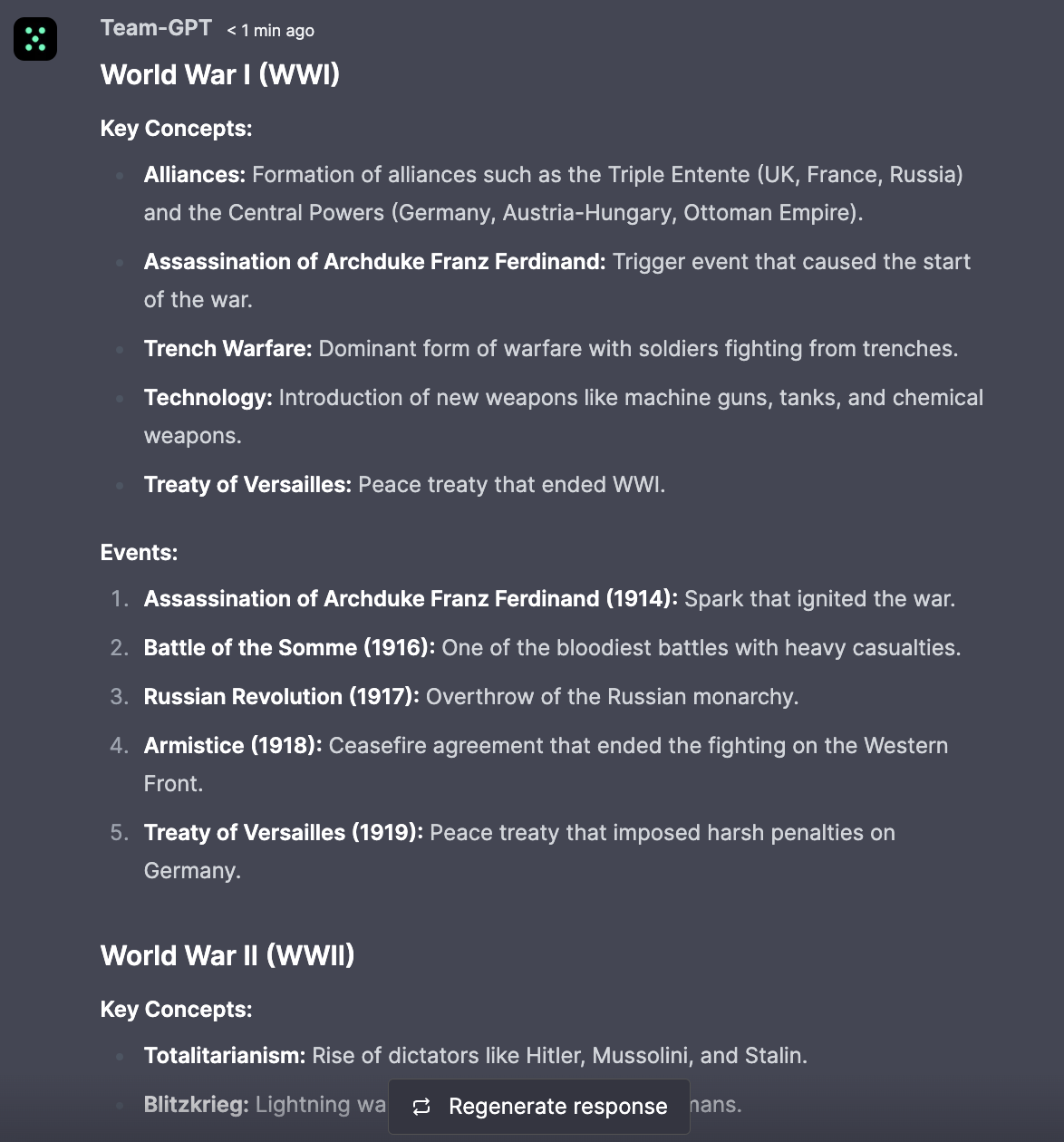
Chat link: https://chat.team-gpt.com/public/tanish/65d3327003ccb67941040e0f
5. Behavior Management
Behavior management involves identifying which students are consistently disruptive and coming up with a strategy to tackle them.
The thing is: Only one-third of all teachers are effectively trained to manage absurd or challenging behavior in the classroom. Yes, behavior management requires training with several steps involving things like:
- Identify the type of disruptive behavior — inattentiveness, argumentative, disrespectful, or something else.
- Understanding the root cause of these behaviors.
- Developing a strategy to prevent students from misbehaving.
- Keeping parents in the loop.
Earlier, teachers could scratch their heads off trying to iterate strategies to sustain their classroom behavior. However, today, a single prompt can do wonders.
Here’s how. 👇
Prompt: Explain the process of behavior management in classrooms, including the importance of teacher training for managing disruptive behaviors, identifying different types of disruptive behaviors, understanding their root causes, developing prevention strategies, and the role of parental communication.
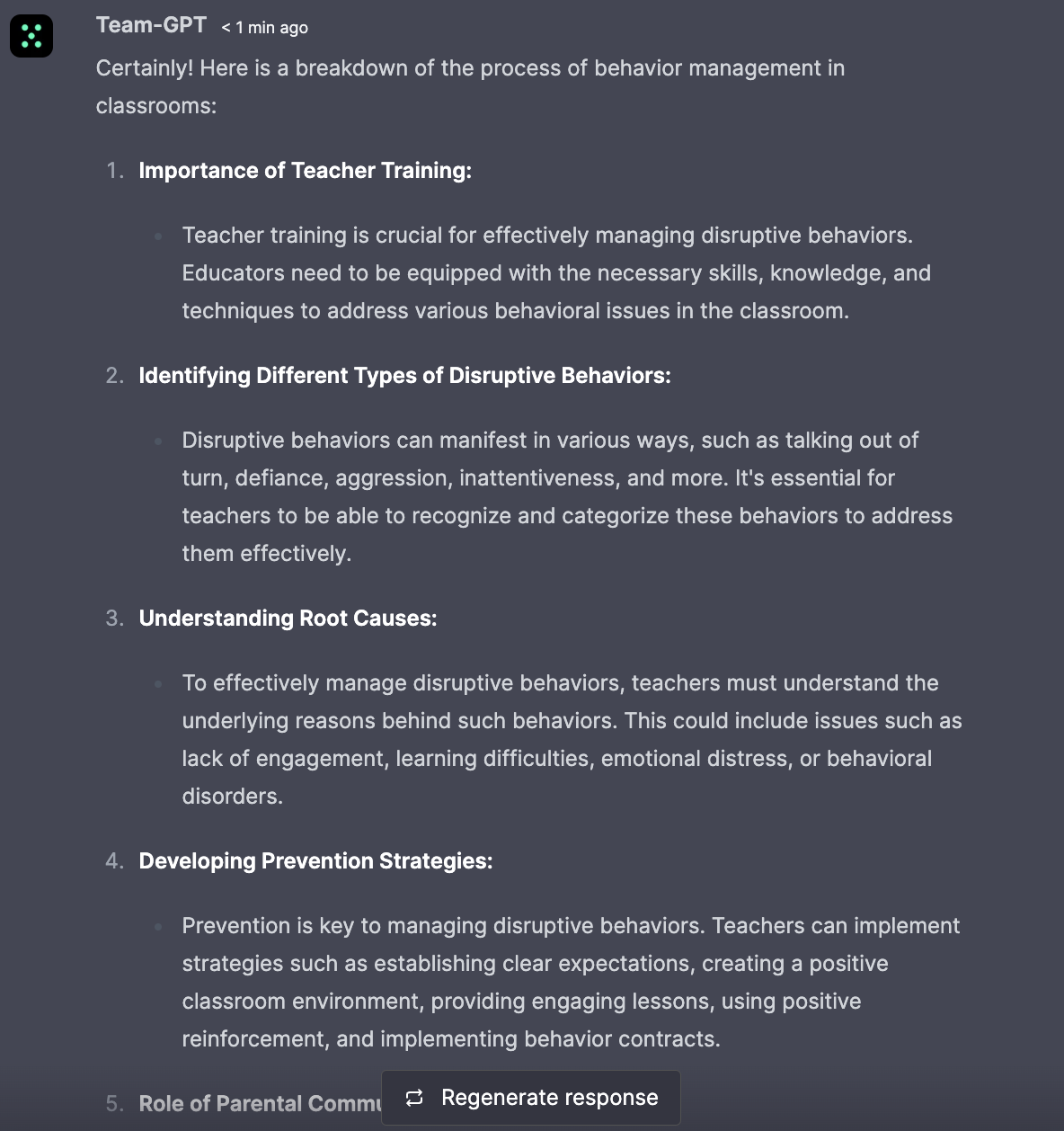
Chat link: https://chat.team-gpt.com/public/tanish/65d3345d93494b6a658a245f
6. Make ChatGPT an Editor
Using ChatGPT as an editor for reviewing students' essays or assignments can save you hours.
The AI bot is capable of scanning large-text blocks for grammatical errors, poor sentence framing, and suggestions on how to improve it.
Besides, the corrections and feedback are instant, unlike the traditional editing and proofreading methods.
To get started, input or upload the essay document. Then, ask AI to role-play a language expert and suggest edits, errors, and corrections needed on that particular essay.
Here’s a prompt you can use:
Prompt: [inset essay]
I have an essay (or assignment) that I would like to improve. Act as a language expert and thoroughly review it for me.
Check for any grammatical errors, awkward sentence constructions, and any areas where the clarity or flow could be enhanced.
I'm looking for detailed feedback on how to make my writing more coherent and engaging. Also, if there are any stylistic adjustments or vocabulary changes that could elevate the quality of the essay, I would appreciate your suggestions.
Lastly, if you identify any repetitive or redundant sections, please advise on how to revise them for brevity and impact.

Chat link: https://chat.team-gpt.com/public/tanish/65d3351ba3c1372568e7f6fe
7. Build Essay Outlines
Allow students to use ChatGPT to create essay outlines. But wait — this doesn’t mean you encourage using AI for homework.
Kevin Roose, technology columnist for The New York Times, suggested a brilliant solution to use AI in classrooms. He said:
“For the rest of the academic year, schools should treat ChatGPT the way they treat calculators — allowing it for some assignments, but not others, and assuming that unless students are being supervised in person with their devices stashed away, they’re probably using one.”
Prompt: Help me create a detailed outline for an essay on [Your Essay Topic]. The essay should have a clear thesis statement that presents the main argument or perspective.
Include an introduction that sets up the context and significance of the topic, followed by a series of body paragraphs. Each body paragraph should focus on a specific point or piece of evidence that supports the thesis, including any necessary explanations, examples, and analysis.
Additionally, I'd like suggestions for counter arguments or alternative perspectives and how they can be addressed or refuted within the essay.

Chat link: https://chat.team-gpt.com/public/tanish/65d33651f2d085b3a80b9969
8. Run Interactive Storytelling Sessions
ChatGPT can help your class engage in an interactive storytelling activity.
It works like this: prompt the AI to create a story together by taking turns. Let students take over. Then, ask each student to add narratives to the story. Here’s a prompt to get started:
Prompt:
Let's create a story together! Start with an opening line, and I'll respond with the consequences. We can continue the story by taking turns.
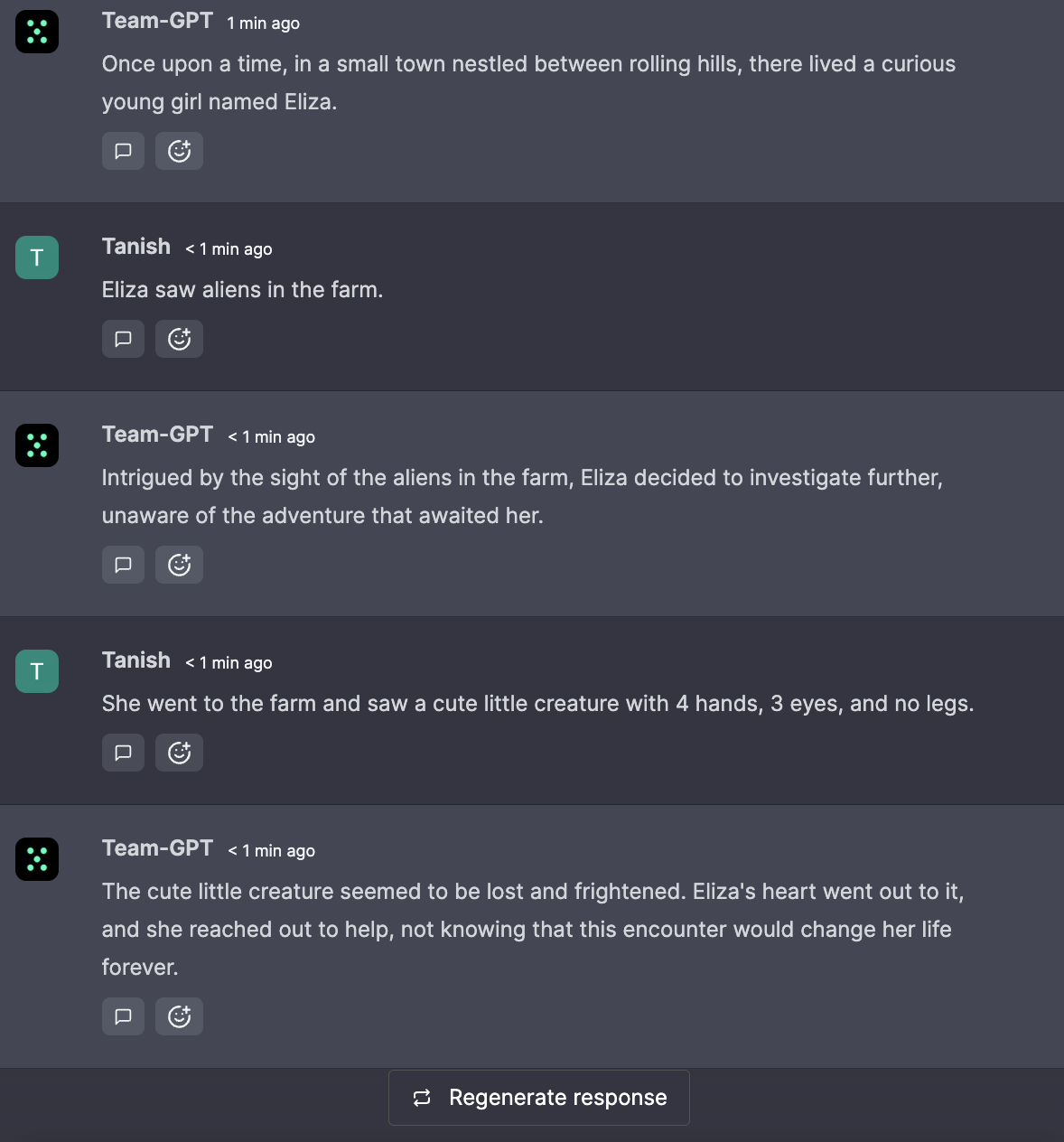
Chat link: https://chat.team-gpt.com/public/tanish/65d336b02c6a88591f89c02e
What are the Concerns for Using ChatGPT for Educators?
As the adoption of AI amplifies in the classrooms, educators are concerned about how to use these technologies in a controlled manner.
Academic dishonesty tops the list of educators' concerns about AI in education. Teachers also worry that increased use of AI may mean learners receive less human contact.
Here’s what educators are most concerned about:
- 65% are worried about plagiarism in essays/homework/work.
- 62% fear reduced human interaction in learning (which is already witnessed in the post-pandemic era).
- 42% are hesitant about the privacy and security issues persistent to the use of AI.
- 30% of teachers feel they won’t be necessary if AI takes over classrooms.
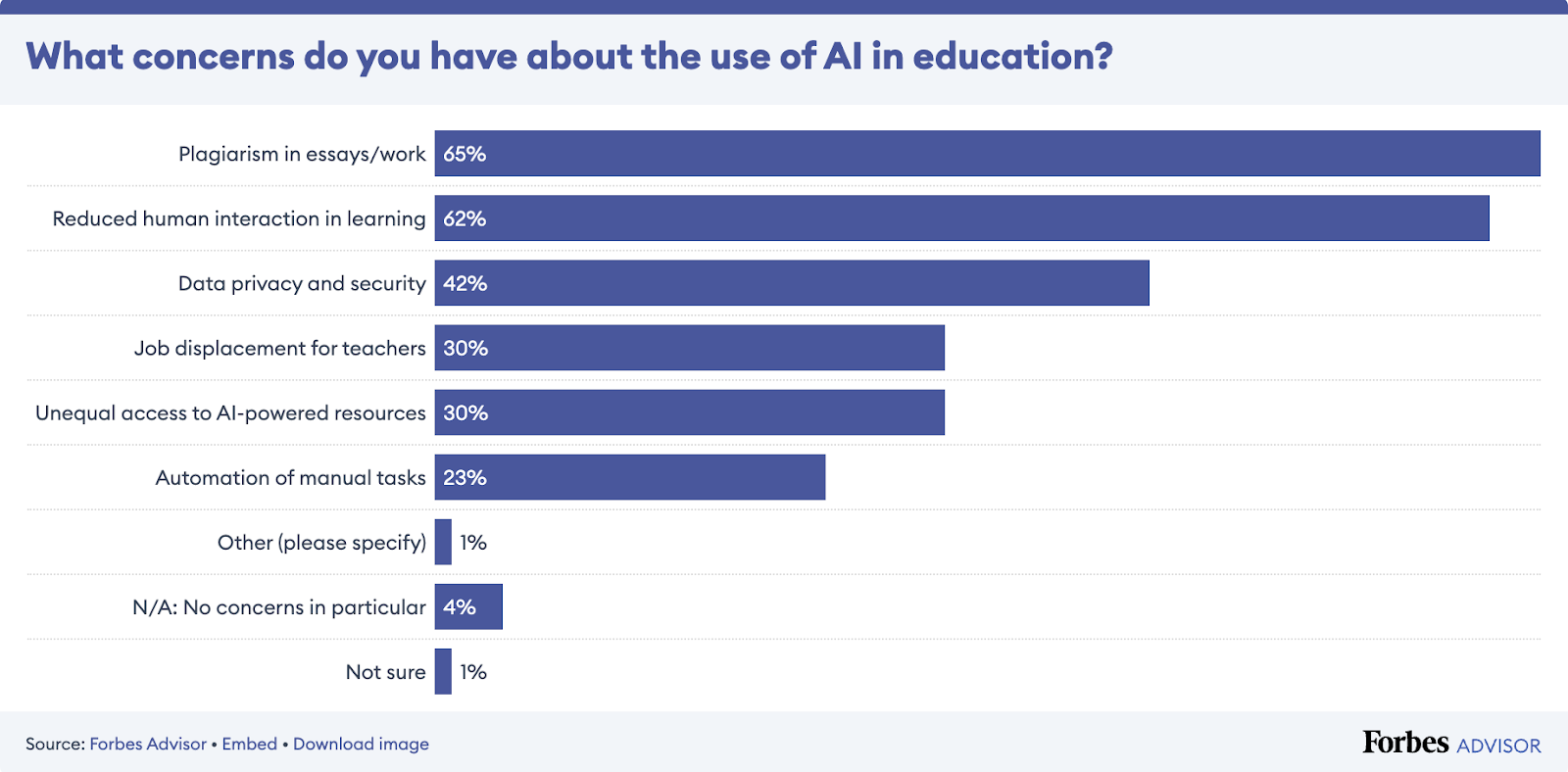
Recently, Snapchat’s My AI chatbot gave a harmful suggestion to a mere 13-yrs young student. The incident fueled discussions around concerns about using AI for educators and students.
Steven Watson, a researcher from the Faculty of Education, cited his no #1 concern in a ChatGPT 2023 report by the University of Cambridge. He says:
“My number one concern is that we don’t ignore it (ChatGPT). It’s already being used very widely, and the cost of replicating it is much lower than that of inventing it.
There have already been some negative consequences – for example, recent issues with the Snapchat-based chatbot My AI coaching users in harmful behaviors. The ubiquity of the technology means that educators need to be aware of how to use it, the associated dangers, and how to encourage safe use.”
Can AI Tools Help Teachers to be More Productive?
AI tools are already helping teachers with tedious tasks like lesson planning, behavior management, editing, getting feedback, and more. However, AI has its downsides as well.
Let’s briefly understand the pros and cons of using AI tools for teachers:
Pros
- ChatGPT can help teachers research concepts, gather information, and summarize them in an easy-to-understand manner.
- It can also help them produce teaching materials, like notes, examples, and analogies.
- When students struggle with assignments at odd hours and you’re unavailable, ChatGPT can step in for immediate clarification of a concept, thus serving as an education assistant.
- Teachers can use AI as their writing assistant, helping them with professional communications.
- The AI can act as a mentor for teachers, guiding them on the best practices for managing classroom behavior, resolving conflicts, and developing strategies to cater to individual student needs.
- In many cases, AI tools can help teachers assess and evaluate assignments based on asked parameters.
Cons
- The use of AI in classrooms, if not controlled, can have an adverse impact on student’s learning capabilities.
- The rapid boom of AI in education has raised concerns about plagiarism in homework and assessments.
Wrapping Up
All in all, using ChatGPT for teachers is a good thing. However, teachers must use it with caution and treat AI as an assistant rather than their replacement.
When using ChatGPT in class, ensure that the students use it under your supervision and are not allowed to use it at home.
The best way to leverage AI is when you onboard your students on a single platform where you and your students can use ChatGPT together under your supervision.
All this is possible with Team-GPT – a platform that lets you collaborate with your students and use ChaGPT simultaneously and do much more. Sign up for its free plan and see what the tool’s capable of.

